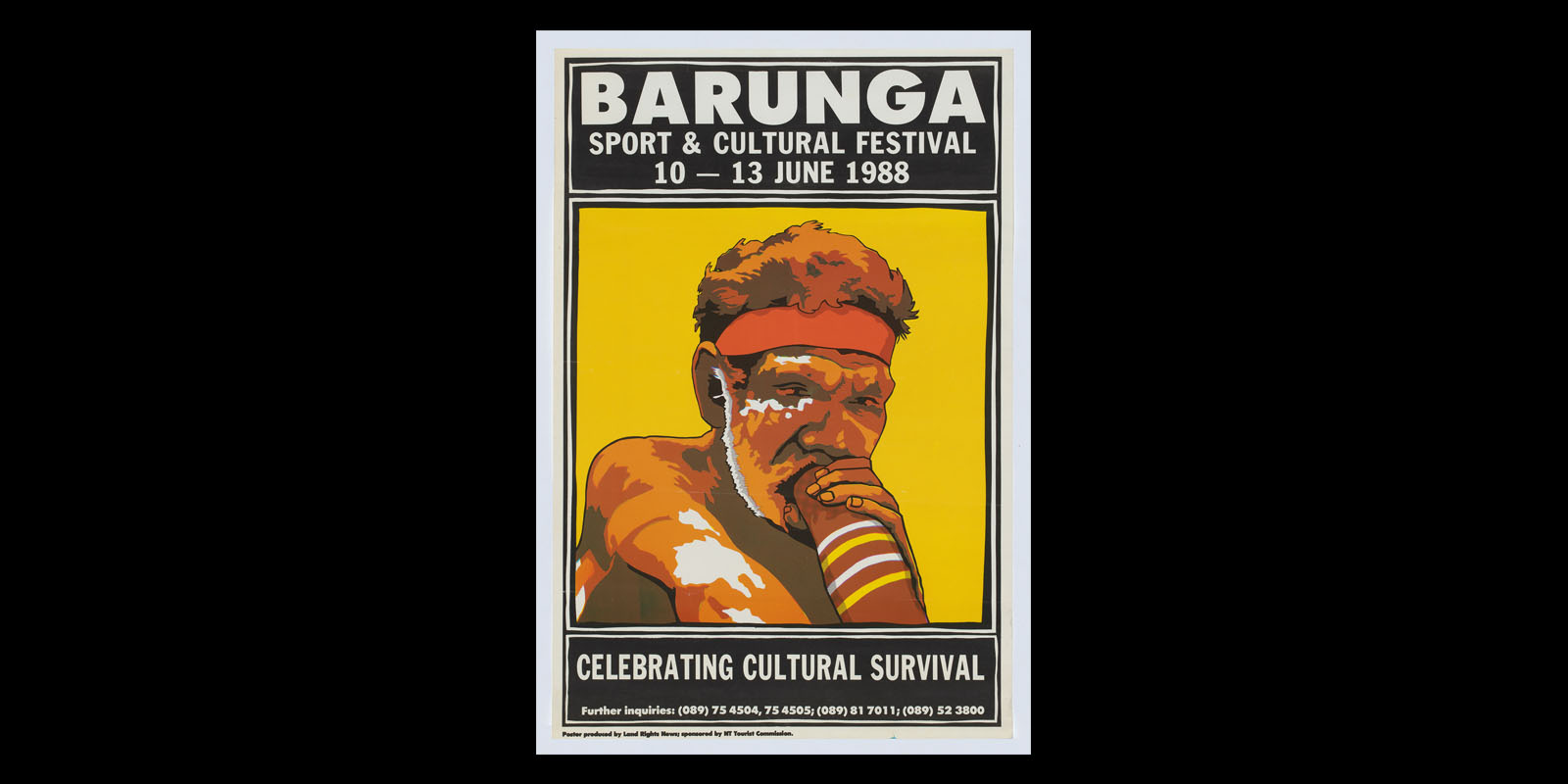The Barunga Statement is an important painted document that was presented to the Australian Government calling on them to recognise the rights of Aboriginal people.
The statement originated at the 1988 Barunga Sport and Cultural Festival. The festival was created by Bangardi Robert Lee (1952–2005), a leader of the Bagala clan of the Jawoyn people, in 1985.
‘The main aim of the festival is to bring people together, sharing and understanding each other’s problems. This way we can get to know one another properly.’ - Bangardi Robert Lee


Image: Poster for Barunga Sport and Cultural Festival, 10-13 June 1988. Source: AIATSIS.
The Statement
The Barunga Statement was presented to Prime Minister Bob Hawke on the 12th June 1988 at the annual Barunga Sport and Cultural Festival. The statement was presented on bark and combined both the English language and the art and symbolism of the mobs in northern and central Australia.
It was focused on the rights of mob and called for land, social and economic rights, self- determination and compensation among other things. In response to the Statement, Prime Minister Bob Hawke claimed that he would have a treaty created between Aboriginal people and Australian Government by 1990 – this promise was has still not been fulfilled.
You can read a copy of the document here.
The Art
The Barunga Statement was painted during the 1988 Barunga Sport and Cultural Festival, it was the result of years of discussion between mob in the Northern Territory and the Australian Government. The document was painted by several artists who represented different mobs across Northern and Central Australia.
The left hand side of the document was painted by Yolngu men and is made up of their distinctive cross-hatching style. The panel is split into thirds with each section depicting Dreaming stories from across north-east Arnhem Land. The tree stories included, from top to bottom, are Crocodile Fire Dreaming of the Madarrpa people of the Blue Mud Bay area, the Crocodile Fire Dreaming of the Gumatj people of the Caledon Bay area and the Whale Dreaming of the Trial Bay area.
The right half of the document was painted by Arrernte and Warlpiri men from central Australia and uses their well-known dot-painting style that is very familiar across the country. Their half depicts the Two Women Dreaming – a story that links the major language groups of Central Australia. The painting shows women meeting at two sites in the northern territory with the middle section depicting the women coming together to exchange gifts and carrying the story on through their country.


Image: The Barunga Statement 1988. Source: AIATSIS.
After The Statement
Following the presentation of the Statement in 1988, on December 10, 1991, the Barunga Statement was presented at parliament house during a ceremony. The co-creators of the statement, Galarrwuy Yunupingu and Wenten Rubuntja, gave speeches, along with Prime Minister Bob Hawke and the Minister for Aboriginal and Torres Strait Islander Affairs the Hon Robert Tickner. This unveiling was the last act of Prime Minister Bob Hawke before he left office. Since the unveiling the Statement has been on display at Parliament.
In 1988 a short documentary, Make it Right!, was released. The film was about the events of the Barunga Sport and Cultural Festival and includes the creation and presentation of the Barunga Statement.
Sources
- The Barunga Statement, AIATSIS
- The Barunga Statement and Agreement, Common Ground
